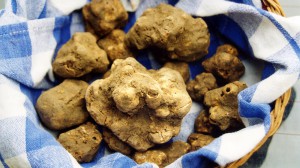Langhe’s rolling hills and ancient hamlets, hidden among noble vineyards, are two of the main reasons why tourists, often from abroad, are compelled to visit this area of Southern Piedmont, situated between the Ligurian Apennines, the Maritime Alps and Monferrato.

Langhe’s rolling hills and ancient hamlets, hidden among noble vineyards, are two of the main reasons why tourists, often from abroad, are compelled to visit this area of Southern Piedmont, situated between the Ligurian Apennines, the Maritime Alps and Monferrato. The landscape of the Langa is unique in being consecrated, finally, in June 2014, with its inclusion on the Unesco World Heritage List. The main element, which almost totally characterizes it, is its hills.
In fact, the hills are the dominant feature of this area, even if they do display different contours depending on whether you are looking from the right side or left side of the Tanaro River. From the left bank of the Tanaro you can, in fact, find Roero which is geologically younger (these hills emerged and formed some 5 million years ago), and characterized by striking rocks, with steep walls that open real clefts into the landscape.
However, from the right bank, long hills start to rise, becoming real flaming “ridges of earth”, which emerged in an even more ancient time, about 15 million years ago, in the Pliocene, and are called Langhe. Over the millennia, the weather has eroded the sides, making them today sweet and soft to the eye, creating a unique effect, which reminds some of a succession of sea waves. A rich green sea, because today the element that best characterizes the Langa immediately stands out: the vine. The neat rows of the vineyards instantly recall another important reason that pulls visitors to visit this region: the wine.
In Italian we say Langhe, the plural form of Langa, because we must remember that there are several Langhe; Bassa and Alta Langa, whose distinction is not simply the altitude of the two areas (Bassa Langa, Low Langa in Italian, does not reach more than 500 meters above sea level) but, above all, it is what is produced that makes the real difference. In fact, we can then speak about the Barolo Langa, whose name is clearly given by the fact that in that very small and limited area, the Nebbiolo grape is king. Also present are the Barbaresco Langa, the Dolcetto Langa, and also the Langa of the hazelnut, where we find the municipality of Cortemilia where a famous hazelnut variety is produced. This last one is also the Langa of several types of cheese (different kinds of tuma and robiola) and mushrooms; the excellent porcino variety that competes against the other great protagonist of the territory – the truffle.
Here the question becomes serious and complex, given the wide range of wines that every wine-lover can find, taste and learn.

Langhe, from the end of the 1960s, started to give rise to satellite activities based on the wine production and its export, especially outside Italy, and soon became the main competitor to the most popular and renowned French wines. Those who visit Langhe often know very well the excellent wines produced in this area, which now act as a figurative business card for our territory. From the simple wine lover to the expert wine tourist, everybody has great expectations coming here to personally see the terroir where these wines are produced. In recent years, the approach of the wine tourist to the wine world is changing, moving increasingly towards sensory and emotional research.
More and more people, from every corner of both Italy and the world, come to visit over 290 wineries in Langhe and Roero to test first hand the single wine realities, often family-run wineries, curious to know the family history of the winery as well as that of the wines they produce. Emphasis is on creating a relationship of familiarity and intimacy between producers and consumers, to transmit an important message: wine is not just a simple alcoholic liquid to drink on special occasions, such as celebrations, anniversaries or weddings, but a drink of ancient tradition that can accompany us through many moments of our lives. Behind a glass of fine Dolcetto, Barbera, Nebbiolo, Barbaresco or Barolo lies a whole world of people and moments that start from the soil where the grape vine draws its nutrients and continues through to its picking, the exciting Autumn harvest, its fermentation, and its conservation and maturation in oak barrels, where the single wines patiently wait for the right moment before being placed on the market.
The hills of Langhe and Roero, in the province of Cuneo, have always been the land of noble vineyards and great wines, and express high quality and diversity. The terroir of this area, the temperate cold continental microclimate, the Alps situated to defend and protect the slopes of Langhe, the particular geological characteristics of the soils, characterized by clay, limestone marl, bluish marl, tuff, sand and gypsum mean that the grapevines produce wines of excellent finesse, structure and elegance. Some data can help better define the peculiarities of this area of southern Piedmont: nearly 90% of the hectares cultivated with vines are recorded in the Registers of the Designations of Origin, thus providing the raw material for DOC and DOCG wines, with a proportion almost reversed when compared to the Italian average. If in Italy there are 325 DOC, Piedmont contributes with a good 44 (approximately 13.5%) and from a total of 41 DOCG, Piedmont enumerates 12, that is a third of the total Italian production (figures as of 2008). The wines of Langhe and Roero range from fine wines, powerful red wines that age, wines that are immediately ready to be drunk, capable of accompany daily meals, to excellent and fragrant white wines, without forgetting one last important factor, namely the excellent value for money enjoyed by the consumer.
A great reason to spend a weekend in Piedmont is the superb cuisine of the Langhe.

Tourists who visit Langhe very often ask: “Where can I eat a good and traditional Langhe dish?” To which the guide or local will always give this answer: “Everywhere! It is impossible not to eat well with the many options that Alba and Langhe has to offer!”
The cuisine of Langa is certainly one full of flavours, colours and scents, capable of amazing with its richness, and its variety of courses and ingredients. Visitors often end up falling madly in love with a simple but well-dressed dish of tajarin with meat sauce or a dish of agnolotti al plin with butter and sage.
Describing, in just a few lines, the vastness and the goodness that today the Langhe cuisine offers would be too simplistic and perhaps unfair to it; to fully understand and enjoy it, one must go to lunch or supper in the most traditional of the Langhe eateries: the piola. The dining experience one can experience within a piola of Langa, recalls the old inns of days gone by, and is very different from the restaurants which are too often tourist-oriented or too upmarket. In the past, a piola was an important point of reference for the local communities of these various hillside villages, who would gather inside to eat a dish together, play cards and talk business. Still, nowadays, the piola allows the visitor to taste the dishes of the real traditional and handmade cuisine of Langhe. But let’s not forget the well-known restaurants, often awarded with Michelin’s stars, the small realities of the villages, the trattorie, the wine-bars, which offer a vast range of options in terms of type and cost, to the visitor who can enjoy the excellence of the Langhe cuisine. A great starting point to approach the discovery of its courses, is found in its appetizers; perhaps today a point of excellence of Langhe gastronomy, for what concerns quantity and quality, for the richness of flavours and the simple ingredients used.
What can we say about the great cutting boards served with local cold cuts, ranging from homemade salami, to bacon, air-cured pork meat, and up to the delicious raw ham of Cuneo? As one continues through the appetizers, the choice becomes more and more difficult: one can try the traditional dish of raw meat, beaten with a knife or presented in thin slices called carpaccio, which in the fall season must be paired with the traditional grating of a truffle, possibly the White Truffle of Alba which is the gastronomic pride of the cuisine of the “capital of the Langhe”. One cannot forget the special omelette, with wild herbs, often the early produce of the season, which will colour your dishes. There are also excellent types of flan with fondue, the crepelle with porcini mushrooms, capsicums with bagnèt verde, a green sauce, and anchovies, which seem to melt in the mouth, seasoned with the irresistible green or red sauce, the marinated vegetables, or the dish called tonno di coniglio, rabbit like tuna, very popular in these areas.
A single chapter has to be written for to the queen of the table in autumn and winter months; the bagna cauda, a sauce made with garlic and anchovies, placed in a pot in the middle of the table and kept warm by a little stove fuelled by a candle, where it is possible to dip cooked or raw vegetables. The bravest, at the end of the meal, even try to dip slices of fruit, pears or other fruits in season. Try it! The list is long; we do not want to specifically list all the different appetizers and thus remove the visitor’s curiosity and the pleasure of discovering others, so that everyone can draw a personal list of delicacies. Furthermore, on every table, is inevitably found a wicker basket filled with crispy slices of local bread grown and “His Majesty” the breadstick, a Turin specialty, put on the dinner table of Langhe, made with corn, rye, as well as those made with the hazelnut “Tonda e Gentile” produced here in Langhe of course, that one cannot miss.
The great variety of first courses will make the choice difficult: it will be possible, in fact, to try the small delicious gnocchi, ravioli del plin with butter and sage, or tajarin with meat sauce; the latter two dishes are the true references with which one may deepen one’s knowledge of the Langhe territory. Tajarin are fresh egg pasta noodles whose flavour is enhanced by sauces made with mushrooms, meat or from the traditional “comodino”, a dressing prepared with sautéed vegetables and bacon that are then soaked in red wine. Agnolotti “del plin” are a type of small pasta envelope containing different fillings, ranging from braised meat to vegetables. Their name comes after the typical pinch needed to close them. All the different kinds of risotto are excellent, always enriched with being cooked or simmered with Nebbiolo or Barolo until they evaporate or are prepared with Castelmagno cheese. In autumn, in the Langhe kitchens, the second course is a triumph of meat, especially beef of the Piedmontese variety called Fassona Piemontese, considered the queen of several dishes, such as the traditional “gran bollito”, typical of the hamlet of Carrù. This recipe is rich and simple at the same time and according to tradition it involves the number 7: seven cuts of meat, 7 ornaments also of meat (tripe, head, tongue, etc.), 7 side dips called bagnet, and 7 side dishes. Celebration of the Langhe cuisine comes, along with the famous fritto misto, where an incredible variety of ingredients (from sweetbreads to sausages, zucchini flowers, amaretto biscuits and semolina) exemplify the wealth and originality of some of the oldest Italian cookery. Everything is embellished with stem glasses filled with the excellent wines of Langa, from Dolcetto to Barbera, from Nebbiolo to His Majesty; the Barolo. The cheese trolley, with tome, robiole, soft cheese or others with different aging, all made in cheese factories of Alta Langa, are paired with cugnà or honey.
And finally its unparalleled desserts, being the Langhe home to delights, ranging from the priceless sweetness of the hazelnut cake, to the famous hazelnut variety called Tonda Gentile di Langa, passing by the panna cotta, reaching the superb bonet, the grandmother’s pudding, made with eggs, without forgetting the excellent fresh patisserie… Has this whetted your appetite to learn more and personally test the Langhe cuisine?
Alba and Langhe hills are not just the land of fine wines and famous truffles but also castles, churches, museums and art sites to visit and to discover…

Alba is a city of ancient origins that date back to 6,000 years before Christ: it was an important Neolithic station, which has yielded many important remains, preserved partly in the National Museum of Prehistory “Pigorini” of Rome, and also in the section dedicated to proto-history in the local Civic Museum “Eusebio” in Alba. This museum also hosts important evidence and material traces of the Roman period, when Alba’s name was Alba Pompeia and was a rich and prosperous Roman city, with cobbled streets, walls, prestigious houses, a massive tribunal, a theatre and other important buildings.
Some artefacts and monumental remains can be seen whilst strolling through the old town, where one can see the remains of the Capitoline temple, parts of the paved Roman road, and drainage systems, etc. But Alba is primarily a medieval city, with its towers dotting the landscape of the ancient city centre, with brick tower-houses, often decorated with beautiful terracotta friezes on the facades, arches, mullioned and three-light widows which are interspersed with baroque reconstructions, Art Nouveau and modern styles, creating a veritable open-air museum.
For those interested in more cultural and sacred tourism, Alba has numerous fine churches, some very ancient with real treasures of sacred art that can be freely admired. When in Alba, one cannot forget a stop at the Cathedral and the church of St. Dominic, a real jewel of Romanesque-Gothic art, one of a kind, and the church of the Madeleine, a triumph of marble and baroque shapes. Also the parish churches of the villages of Langa often contain real treasures of art, to discover and photograph. Alba, the undisputed capital of Langhe, is worth visiting slowly, appreciating the small glimpses of sudden squares, and narrow and quaint streets, with unique craft shops and bookstores, medieval towers, and Roman ruins, as well as the friendly smiles of its inhabitants.
However, leaving Alba will not end your journey through art, history and culture. The ridges of the Langhe hills are dotted with ancient villages, set amongst stunning scenery, with towers and medieval castles, military fortresses or noble palaces used for holidays and hunting that you will be free to visit. Historic buildings open their doors to visitors and historic wineries still remain, where the art of wine coexists with the forms and architectures of the cellars dug into the tufa, in the bellies of the hills, creating true cathedrals of wine and art. This is just a small taste of what Alba and its hills can offer; a place to discover and appreciate, day after day.
Today, visitors who visit Alba and the hills of Langa have the opportunity to see and attend important cultural events related to the world of songwriting, jazz and chamber music.

Today, visitors who visit Alba and the hills of Langa have the opportunity to see and attend important cultural events related to the world of songwriting, jazz and chamber music.
In fact, two important events are hosted here in Alba and in the surrounding territory: the Alba Music Festival and the Alba Jazz Festival.
Generally held in the period between March and July of each year, the Alba Music Festival is today a veritable celebration of music, in a city that combines the dynamism of the international vocation, with a presence of more than 10,000 people each year. The Festival has become one of the most anticipated cultural reference points of the season, having the favour of the national and international press and is included in the City of Alba’s program of development, funded by the Piedmont Region, and included in the “Piemonte dal Vivo” circuit (Piemonte Live).
As the only Piedmontese Festival with international partnership, the Festival takes shape both from the artistic and cultural relationship established between the City of Alba and St. Mary’s College of Maryland in the US, a prestigious college in Washington DC. The Festival stages concerts in the most illustrious places in Alba and the surrounding region in a way that takes full advantage of the evocative architecture of the entire area, such as the mirror-like stalls of Teatro Sociale, the thousand year old Church of San Domenico, the impressive Temple of San Paolo, to the refined Auditorium of Fondazione Ferrero. From the majestic atmosphere of the Cathedral to a more intimate baroque church such as San Giuseppe, Santa Caterina, or the Maddalena Choir, in addition to the many majestic castles scattered throughout the surrounding countryside, the various settings serve as idyllic backdrops for each concert. These churches bear witness to the art of the past, the historical wine cellars and the evocative corners of precious countryside: musical art in magical places of a beautiful part of Piedmont.
The Alba Jazz festival was created in the same spirit, with the aim of bringing jazz music and its unique sound to the streets and squares of Alba in the summer months, involving not only more and more inhabitants, but also, and more notably, the many tourists to the area, who love the opportunity to attend a great concert in some of the most beautiful areas of the city, perhaps tasting a good glass of red wine from the territory itself.
Among the artistic events and shows, we never forget the Burrattinarte International Puppet Theatre Festival. The festival was born from the idea of bringing street play to a reality such as that of the district Langhe-Roero and Monferrato, which are currently seeing new economic, social and touristic growth, sectors where this cultural opening has proved to be crucial.
The festival, which takes place in the streets, squares, gardens and courtyards of the various municipalities, proposes both street and stage performances from Italy and abroad, thanks to the relationship formed with other festivals and to a great care in the shows chosen to offer the highest-level performances. Included in the project is “Puppets without frontiers”, a transnational partnership between festivals of puppetry and street theatre involving organizations belonging to the whole territory of the Alps, from France to Slovenia, created to nurture a cultural network that has integration and interculturalism as common denominator. Burattinarte proposes the meeting with an ancient, culturally rich and fascinating art thanks to the wide variety of issues, traditions, and techniques used to create stories told using hand puppets, puppets, marionettes, bunraku and by the magical images created by the shadow play.
The main reason that in the autumn brings to Alba and Langhe tens of thousands of visitors from all over the world is the International White Truffle Fair of Alba.

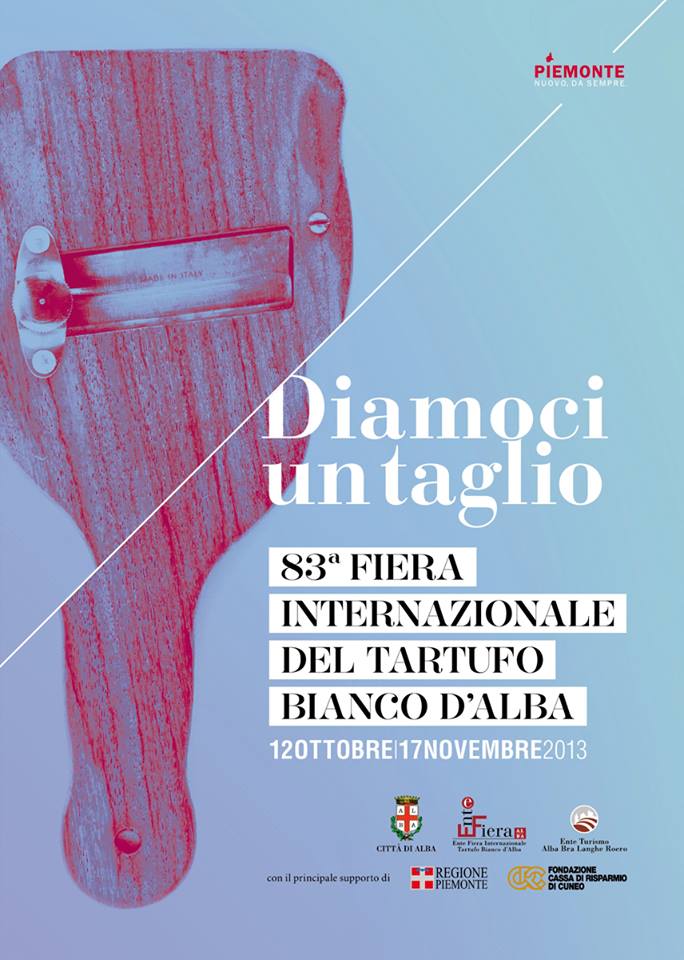
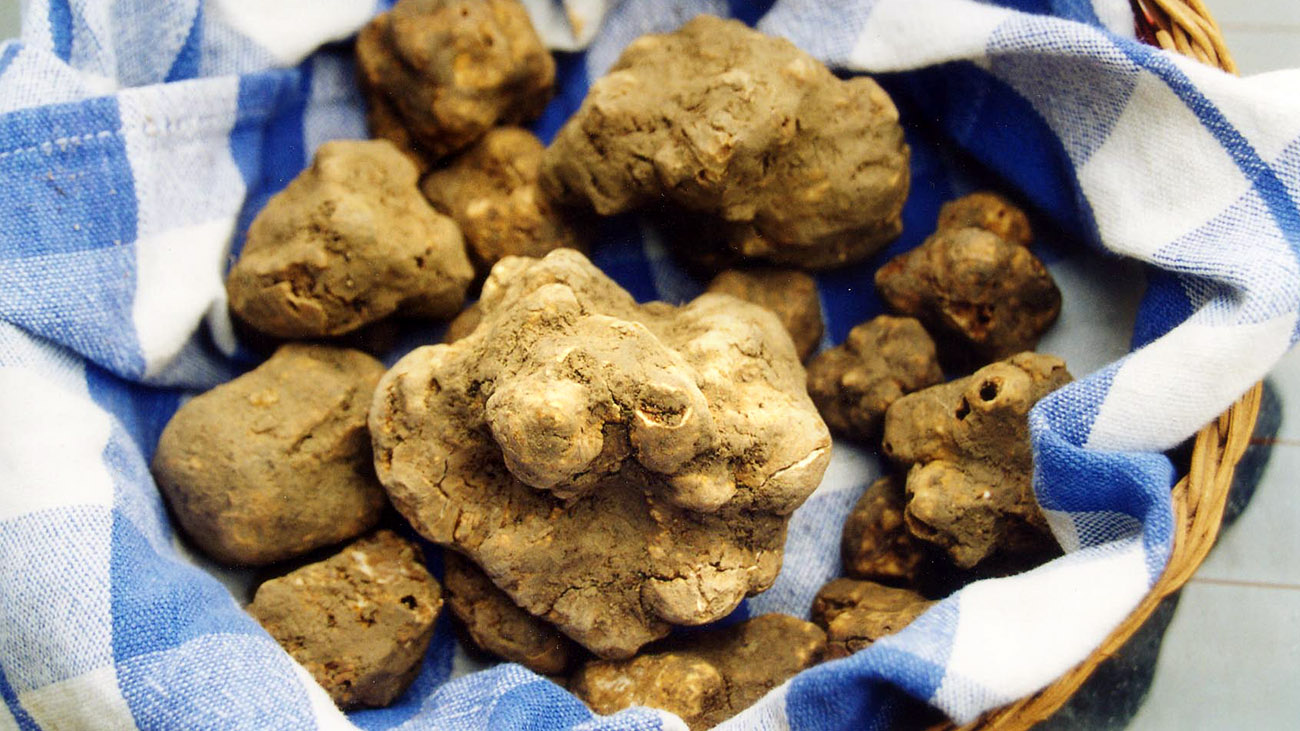
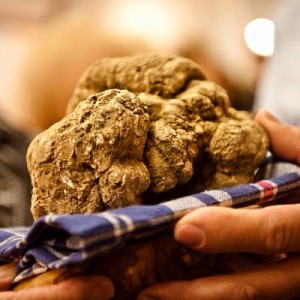
The truffle season runs from October to mid-November, when the vineyards of Langa are a kaleidoscope of many colours, ranging from red to yellow, and from orange to brown and coincides with the harvest period. Among the narrow streets of the small Langa hamlets, spreads an intense aroma of must, truffles, and excellent home cooking, creating a unique atmosphere, full of anticipation and expectation. And this is the time of the trifule picking, tartufi in the Piedmontese dialect and truffles in English, which are celebrated at the Alba International White Truffle Fair which now, after more than 80 editions, takes over the lives and all the major events of the city of Alba.
In fact, inside the Maddalena Courtyard, stands are set up where the best truffles are displayed, evaluated and sold to the many tourists who flock here, sometimes driven by simple curiosity or just to inhale their intense fragrances. There is also the opportunity to launch into real negotiations to buy the truffles with the trifulao, the men who hunt for truffles and display the “fragrant nuggets” on their stalls.
Everything started with Giacomo Morra, (1889 – 1963), a skilled trader, good restaurateur but who was famous mostly as events creator. Indeed, he was responsible for the brilliant idea to create an event related to the white truffle of Alba. It was Morra who promoted the white truffle of Alba in Italy and around the world, underlining that it is one of the best in terms of taste and is an original product of the Langhe region. He wanted to make the truffle a real ambassador for Alba around the world, a brand instantly recognizable as gastronomic excellence of a specific territory.
Since the 1920s, in Alba, there have been harvesting fairs, related to the sale of the grapes, which, were exhibited on carts, and occupied the ancient face of Piazza Savona, today the parlour of the city. Giacomo Morra thought to include within this annual event an exhibition of the valuable local truffles, starting with the Fair of 1928. In 1929, included in the celebrations of the harvest festival, the “Fiera mostra campionaria a premi dei rinomati Tartufi delle Langhe” was organized, a fair featuring awards dedicated to the renowned truffles of Langhe. This event attracted the attention of the local press first, then the Italian press and finally the international press.
Late autumn was the period chosen in order to seize the moment when the precious fungus develops the maximum of aroma and flavour. Mr Morra also invented the prestigious award “Truffle Of The Year”, which, since 1929, is given to important personalities who have distinguished themselves in the field of culture, entertainment, politics or sports. This idea comes from the agricultural tradition of the farmers of Langhe and Roero, who, during an important feast period (generally Christmas or the end of the agricultural harvest), used to give and pay homage, with a truffle, various authorities or professionals in their village. Giacomo Morra understood that in this way it was possible to draw even more attention to the nascent Truffle Fair and those who received this important and valuable prize would also become ambassadors of Alba and its products worldwide. Among the previous winners are Sir Winston Churchill (1948), Rita Hayworth (1949), former US president Harry Truman (1951), the first President of the Italian Republic Luigi Einaudi (1952), the actress Marilyn Monroe (1954), Nikita Khrushchev (1959), His Holiness John Paul II (1978), the actor Alberto Sordi (1984), the tenor Luciano Pavarotti (1990), Prince Albert of Monaco (1998), the Italian former soccer player and manager Marcello Lippi (1997 and 2006) and the actress Penelope Cruz (2011).
To Alba and its hills, the Fair represents the event of the year. From the first weekend of October, every day, the city centre is livened up with a different event, exhibition, commemoration, concert, or performance. Entering the stands, where the several trifulao proudly show their truffles, after a long search together with their dogs in the dark and wet nights at the end of the summer, is a truly unique experience: already at the entrance, the smell of truffles tells the visitors what they will be able to see and, why not, taste inside. Always within the Fair, there is a counter where it is possible to meet experts and judges who can provide a sensory analysis in order to be sure that what you have purchased is a real truffle “made in Langa”, complete with a warranty certificate!
It is not a coincidence that in Alba, in 1996, the National Centre for Truffle Studies was created, an institution unique in the world specializing in the research and popularization of the truffle culture. Here there is the study of scents, new conservation techniques, gastronomic experiences of dishes made with truffles, and tasting seminars are organized. Over a hundred sensory analysis judges act on the markets and in special commissions of certification to ensure the absolute quality of the product: the Alba White Truffle Market is the only one that is guaranteed, with a careful analysis of each example, for health and type of marketed product.
The calendar of events in the city is capable of satisfying every palate and every target, from children to adults, ranging in countless events and side events.
Among these, the most important event, awaited by Alba’s citizens and tourists, is certainly the Donkey Race, which takes place in the centre of Alba on the first Sunday of October, thus marking the real beginning of the Fair. It is a unique and characteristic palio, as it is named in Italian, of its kind that was created, so legend has it, by Giacomo Morra and Pinot Gallizio (eclectic personality and artist), to avenge the insult suffered by the people of Alba made by those of Asti. The latter had run their famous palio on the day of the patron saint of Alba, August 10th, outside the walls of the city of Alba, besieged by them. Therefore, the palio is a prank, if it can be defined in this way, but it is surely a success if it is run by donkeys which, with their unpredictability, do not covet the finish line as much as their riders do. This race also represents a real challenge between the quarters of Alba that dispute the coveted prize, a cloth designed and created every year by a different artist. In addition, the palio is always preceded by a beautiful medieval parade that involves all the areas of the city with over one thousand participants, evoking ancient moments of the history of the city of Alba.
Other memorable moments, for anyone arriving in Alba during October, are the Truffle Bacchanal, where the village returns to the Middle Ages by giving life and sense to the Middle Age period with tastings of traditional products and the Flag Festival where the most skilled flag-wavers of the different villages compete in a true display of skill and colours of their flags.
We are waiting for you! You cannot miss all of this!
From the idea of a group of boys, in 2009 begins this festival that quickly becomes a point of reference in the Italian cultural and musical scene.

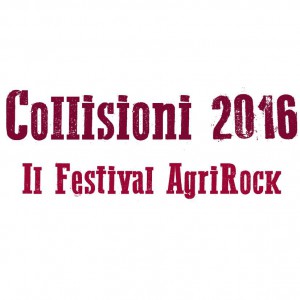
Located, at first, in the Langa village of Novello, the music festival has gradually developed since its inauguration in 2012 and is now optimised as a winning format. Now, the festival is hosted by the town of Barolo, in the heart of the Langa, famed for its great Pidmontese red wines, and it comprises four days packed with concerts, events, meetings with movie directors, actors, musicians, historians and critics set against a panoramic backdrop that has no equal in the world.
The calendar varies from year to year, but the billboard of the events planned is able to satisfy every person’s palate, from rock fans to art lovers, ranging over a number of proposals, with previous highlights being the spectacular concert by Bon Dylan in 2012, Neil Young in 2014 (the only Italian date of his European tour), Mark Knopfler and Sting in 2015.
Collisioni is a popular festival, celebrating literature and music in the hills, but with one peculiarity: there are no tickets to enter and there are no spectators. Instead, it exists as a community that chooses to live three days together, in the name of having fun and sharing ideas. It is a global village where nobody is excluded, and to which everyone can contribute to the making of the event.
During the year, Collisioni organizes meetings with important personalities in the art, culture, entertainment and music sector, known at a national and international level. The meetings take place in Alba and in the nearby villages of Langa, thus creating an increasingly interesting and engaging cultural journey that, in a nutshell, cannot be missed!
To follow the Collisioni project and to get updates on meetings, event and shows: www.collisioni.it
With the arrival of the spring, the old town of Alba is invaded by thousands of colors, scents and sensations with the festival Vinum, dedicated to wine and typical products of the Langhe.
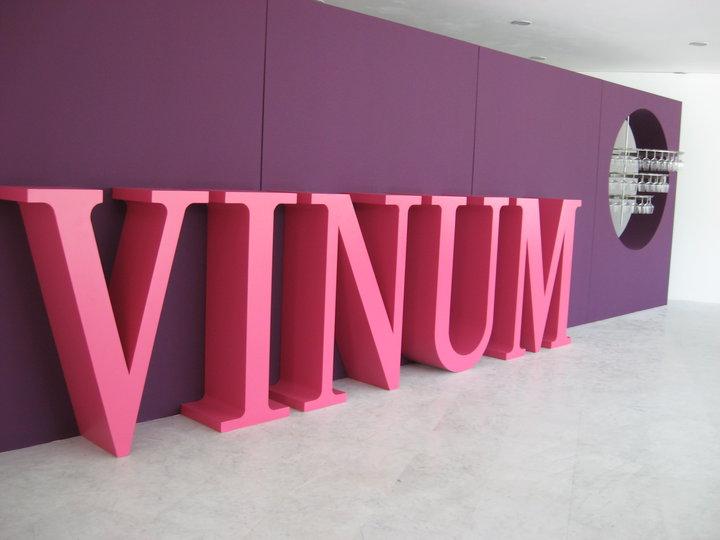
This event takes place every year in the heart of the city of Alba, when its beautiful historical centre becomes a scenic backdrop. Its name immediately transports us to the world of wine and winemaking, which here, in the heart of the renowned wines of Langhe, has an increasingly important role in terms of tourist and economic attractiveness.
Every year Vinum is capable of renewing itself, as shown in the figures and, in 2015, the 38th edition has distinguished itself with a calendar particularly rich within the large festival “Spring of Beauty”, a series of events sponsored by the city of Alba.
The beating heart of the festival has always been the “Great Winehouse of Langhe and Roero”: the appointment will be with the new vintages of the Langhe and Roero designations. Here the visitor, guided by skilled sommeliers, will have the opportunity to taste famous wines of the Langhe territory. These tastings are designed to lead the consumers on a journey and to allow them to drink in a conscious way while discovering the sensory and the cultural aspects of appreciating wine.
The calendar varies from year to year, but it is because of the huge effort of the city of Alba that they are able to create an event focused not only on wine, but that is capable of offering important events related to the world of art, history, traditions, music, and theatre… come and discover Alba during Vinum; it will certainly be a unique and exciting experience.
One of the reasons that drives tourists to visit Alba and the Langhe is also the chance to go to discover the places and the landscapes so dear to one of the leading writers of the Alba scene of the ‘900: Beppe Fenoglio.

Beppe Fenoglio was born in Alba, on February 1, 1922. Since he was a boy, he showed a certain predilection for writing. He lived and studied in Alba, which, in those years, started to become an important economic centre for the Langhe area. He enrolled at “Govone”, a high school of Alba specializing in classical studies, where the teacher Maria Lucia Marchiaro led him to study English and the Anglo-Saxon literature. Fenoglio used to spend his summer holidays with his relatives in San Benedetto Belbo and in Murazzano, showing particular affection for the Langhe hills, the land of his father, a butcher.
At the high school, Fenoglio was lucky enough to be a student of two distinguished teachers who became an important reference point in his studies and for his life: Pietro Chiodi, professor of philosophy, and Leonardo Cocito, professor of Italian. Both anti-fascists, they were actively involved in the partisan war and were able to convey to the young Fenoglio important human and philosophical values. These values can be found between the lines of his writings, based on respect and solidarity. Despite his coherent laicism, Beppe Fenoglio also kept a deep friendship, which lasted a lifetime, with the theologian and philosopher Father Natale Bussi.
With September 8, date of the Badoglio Proclamation, and the Italian army disbandment, Fenoglio chose, as Chiodi and Cocito, to move towards the hills of Alta Langa, to join one of the partisan groups that formed in that period. There he joined first a Garibaldian group and then a Badoglian brigade, thus actively participating in the Resistance. On October 10, 1944, he was with the forces that liberated Alba, which was occupied until November 2. This experience ended into one of his most famous tales: “I ventitrè giorni della città di Alba”.
Fenoglio spent the following difficult and long winter in a terrible isolation, at Cascina della Langa. In his last partisan period, March-May 1945, he was a liaison officer at the British mission which operated in Monferrato, in the Vercelli area and in Lomellina. After the Liberation, he returned to civilian life, but the partisan experience marked his life and inspired many of his novels and short stories.
Since 1947, he worked at the wine producing company Marengo of Alba as a business international representative, a role that he obtained because of its great knowledge of the English language. In the meantime, Fenoglio devoted himself to writing short stories and novels, his true aspiration, so to achieve his dream of becoming a writer. In 1949 he published his first short story “Il trucco”, with the pseudonim of Giovanni Federico Biamonti, on Pesci rossi, a magazine published by Bompiani. In 1952, Einaudi published 12 short stories (six on partisans and six on Langa), entitled “I ventitrè giorni della città di Alba”. In the Gettoni series of Einaudi, “La malora” was published; it was a story the tragic history of the farmers’ society of the early 1900s, set in the Langhe region. In 1959 the first novel, “Primavera di bellezza” was published.
That of Fenoglio is a style for some reasons epic, innovative, rich in neologisms, and words coming from the English language, dry and full of a stingy irony, that in a unique way describes the Langhe region, its territory and its people.
Fenoglio obtained the first recognitions from the critics only since 1960, when he won the “Prato” prize with “Primavera di bellezza” and in June 1962 when he received the “Alpi Apuane” prize, in Versilia, for the short story entitled “Ma il mio amore è Paco”, published on the magazine Paragone.
Critically ill, Fenoglio was hospitalized at the Molinette hospital in Torino and there he died in the night between 17 and 18 February 1963. At the end of April 1963, Garzanti published “Un giorno di fuoco”, which included six short stories already selected by the Author, six discovered by Lorenzo Mondo and the novel “Una questione privata”. His fame, as a writer, was mainly posthumous.
In Alba, in piazza Rossetti 2, it is possible to see a part of his house where he wrote the greatest part of his novels. The building, known as “Casa Mulassano”, is now seat of and important centre for the Study of Literature, History, Art and Culture, the “Beppe Fenoglio” o.n.l.u.s. Here the tourist can visit a part of the original apartment of the Fenoglio family and the new Spazio Gallizio, a space dedicated to the great contemporary artist Beppe Fenoglio. Alba can be a great starting point to discover the city which gave birth to the writer, following a path in the city centre that touches the key places of the life and works of the writer.
From Alba one can also move to other Langhe places and find bits of memory linked to Fenoglio and to events where he was protagonist. One can find tracks dedicated to Fenoglio in San Benedetto Belbo, Murazzano and Mango.
Today, the territory of Alba and Langhe can welcome also tourists that during their holiday do not want to miss the possibility to keep fit and discover these hills through new and funny sport experiences.

Today, the territory of Alba and Langhe can welcome also tourists that during their holiday do not want to miss the possibility to keep fit and discover these hills through new and funny sport experiences.
More and more associations, in fact, offer the possibility to better discover the region and its unique environment with specific routes both for trekking and mountain bike, with or without a guide. Moreover, many publications enrich the offer, so the tourists can find texts, detailed maps that provide a unique way to unveil the Langhe region that surrounds the town of Alba.
Tourists will find a great number of well tracked paths, dotted with updated and precise signage that also include walking time and numbers of km, so that the nature and trekking lovers will get the very best of each experience. Further details on www.langheroero.it and www.trekkinginlanga.com.
If you do not only love sports but also literature and know the Italian writers Pavese and Fenoglio, you can enjoy specific paths to discover enchanting corners, following the footsteps of the legendary characters described by the two authors as well as spotting uncontaminated locations that reveal all the charm of the past. (www.turismodoc.it)
For the bike and mountain bike enthusiasts, Langhe offer a great variety of tracks with different level of difficulty and attractiveness. As well as for walking paths, there are a lot of brochures full of maps and texts to better analyse the features of the area. You can easily have material at the tourist board “Ente Turismo Alba Bra Langhe e Roero” located in Piazza Risorgimento 4, in Alba, or by checking the websites www.turismoinlanga.it, www.langheroero.it and www.pedalainlanga.com.
There is also the possibility to book a horse or coach tour by contacting www.turismoinlanga.it, www.fuoritraccia.com, www.sanbovo.it and www.turismodoc.it/golf-sport-langhe/equitazione-langhe/. Another great experience can be organized with a tour among the vineyards and castles of Langhe and Roero with a breathtaking ride in a hot-air balloon. For more info, check www.turismoinlanga.it.
On the contrary, if your favourite sport is golf, here are some clubs where both beginners or expert players can find the perfect course where they can train and improve their abilities: Golf Club of Alba, Golf Club Cherasco (www.golfcherasco.com), Vigne del Barolo Golf Report.
For the most adventurous, there is also a 8-hectares-park with a little lake near the Tanaro river that offers many leisure and sport activities with adventurous tracks made of Tibetan, Tyrolean and Thai bridges suspended among luxuriant trees. But don’t worry, there is also the possibility to relax with a boat trip, a pic-nic and games in specific areas equipped for children (near Neive, in the hamlet of Baraccone, Tanaro bridge).

